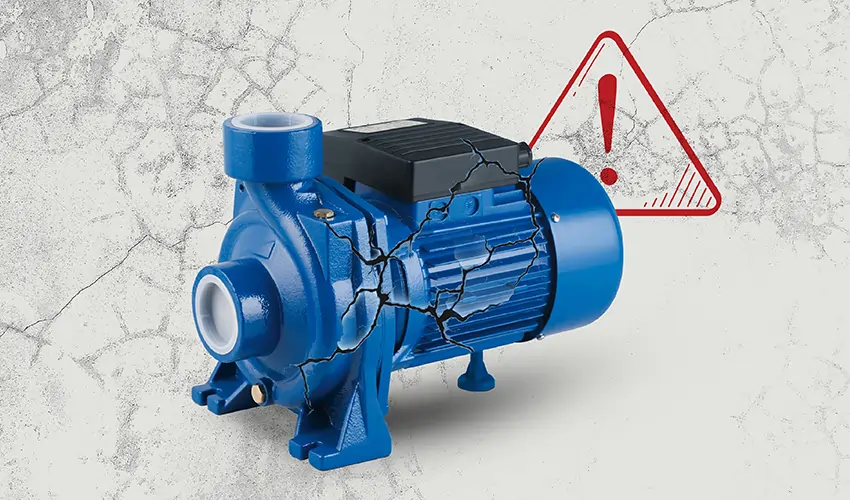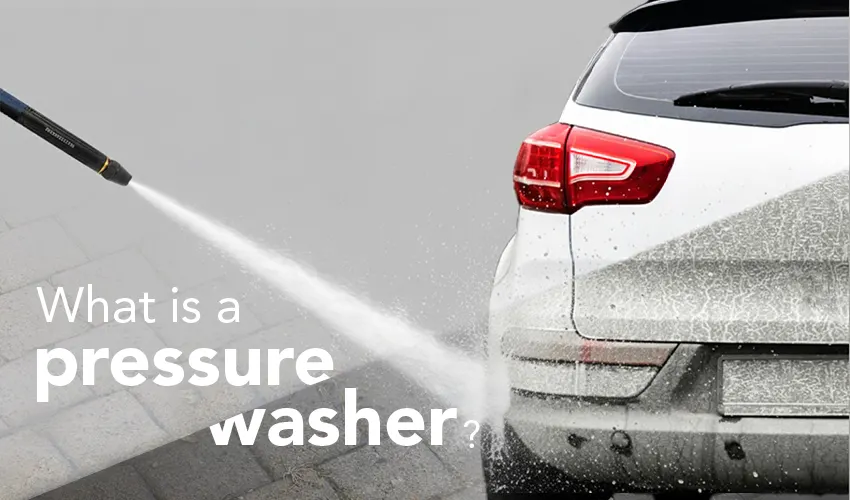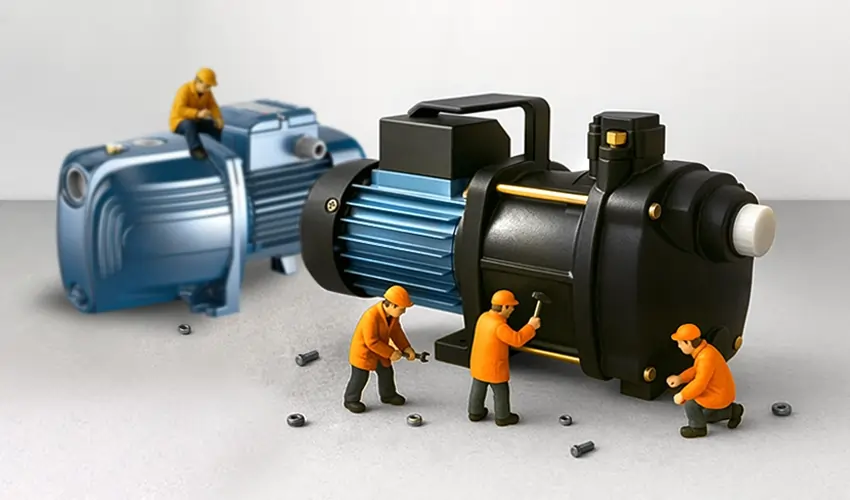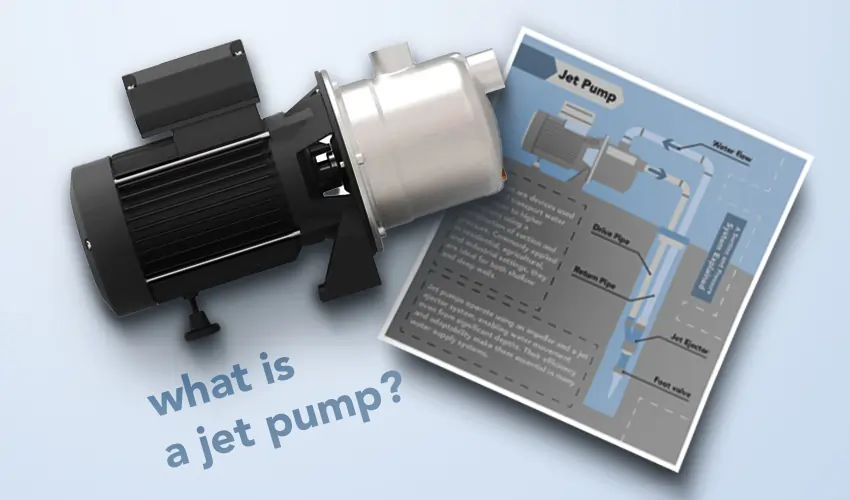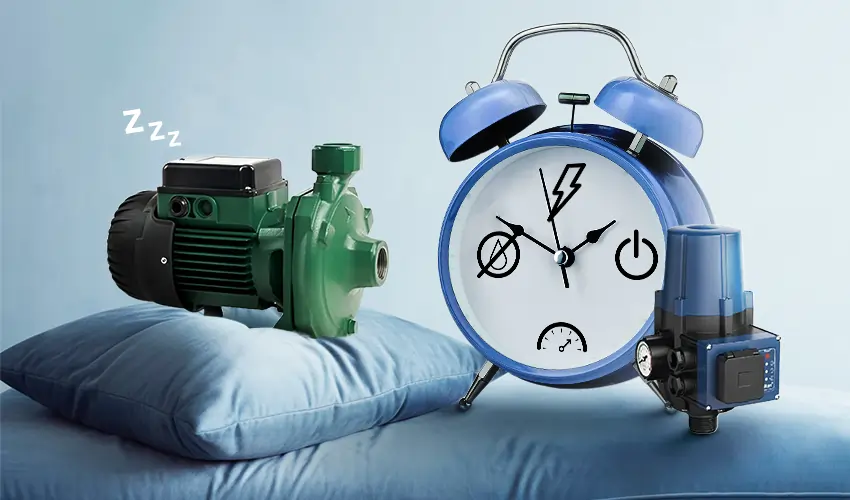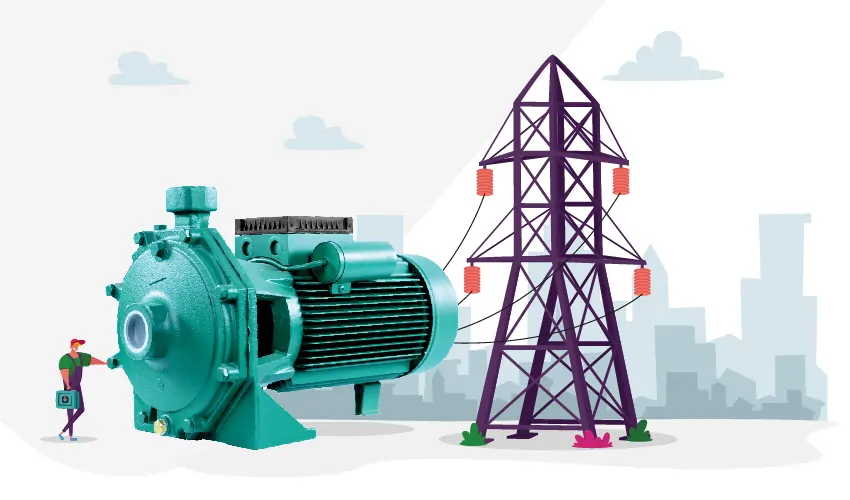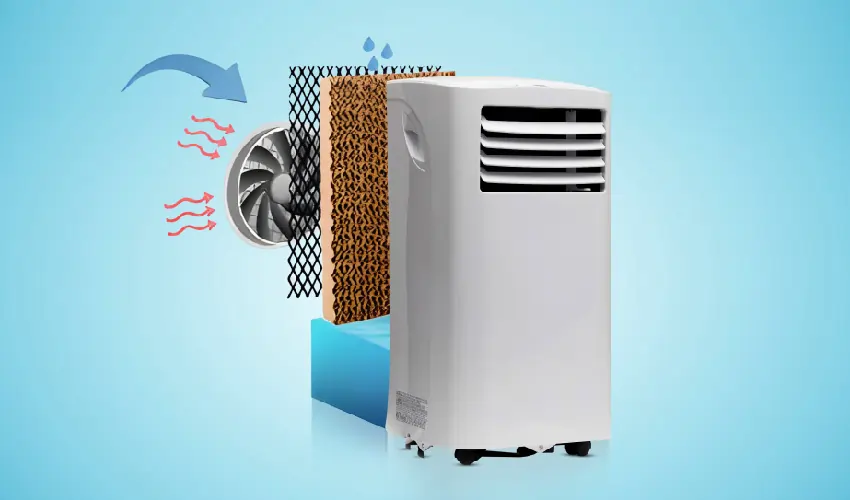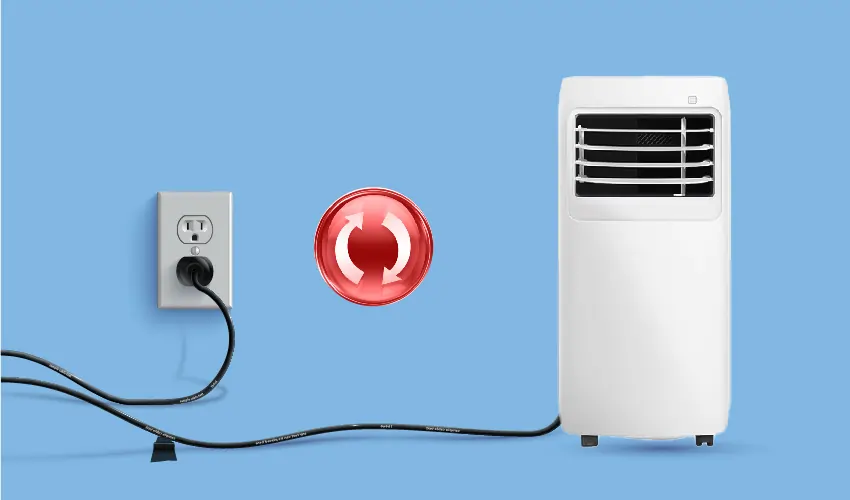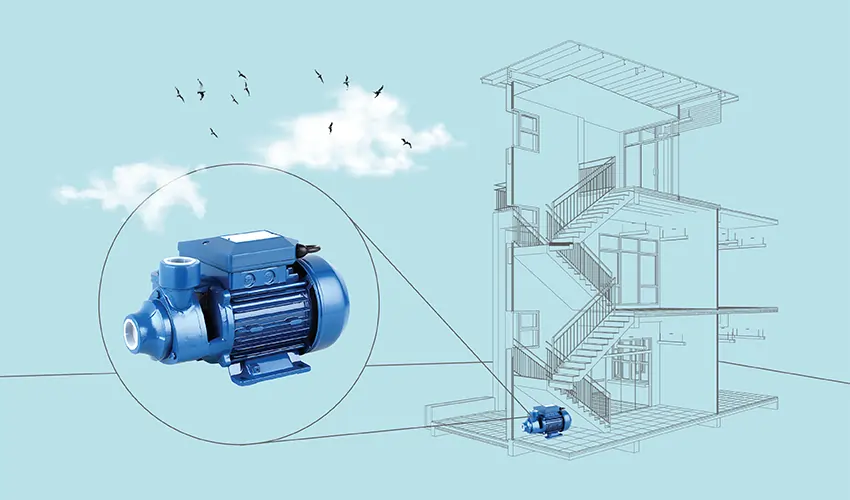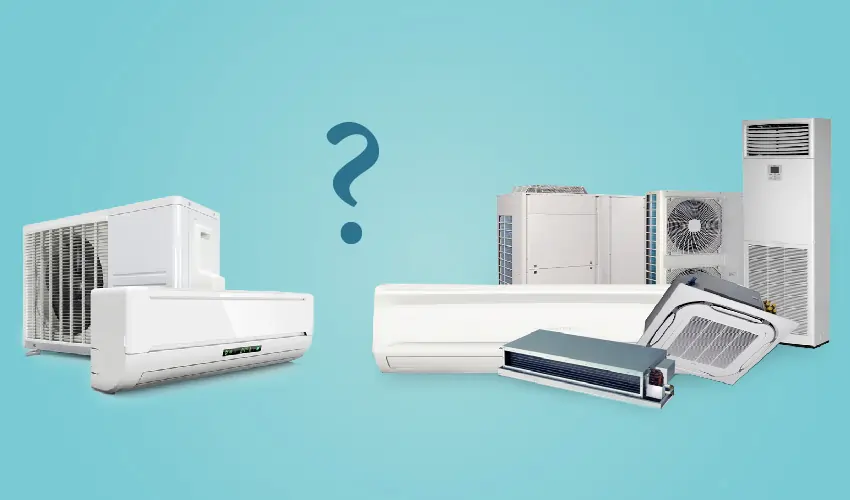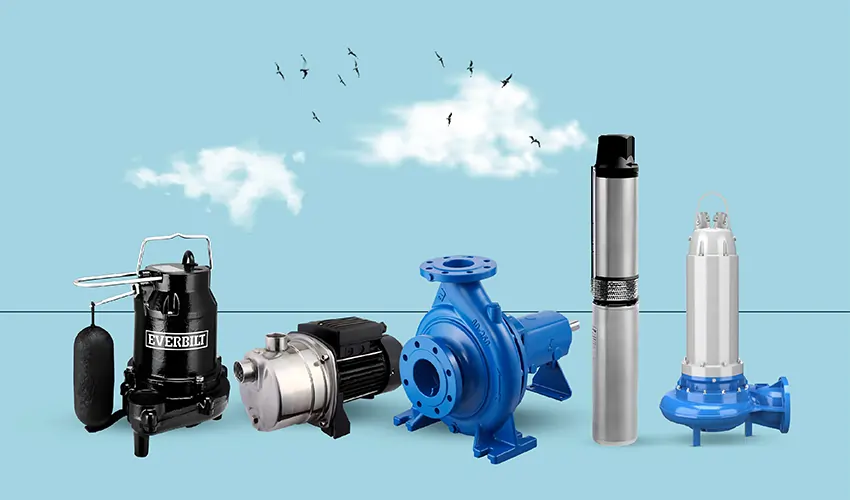Understanding the common reasons for pump failures and signs of a failing water pump is essential for implementing preventive measures. This brief overview explores the key factors contributing to electromechanical water pump failures and highlights strategies to mitigate these issues.
What Causes Water Pump Failure?
Water pump failure can be attributed to various factors, and it’s important to consider both electrical and mechanical aspects. Here are some common causes of electromechanical water pump failure:
- Electrical Issues
- Voltage Fluctuations: Rapid changes in voltage can lead to overheating and damage the motor.
- Electrical Surges: Sudden increases in electrical current can damage the pump’s electrical components.
- Incorrect Voltage: Operating the pump at a voltage other than the specified range can cause issues.
- Mechanical Issues
- Seal Failure: Water pumps typically have seals to prevent water from entering the motor. If these seals fail, it can lead to motor damage.
- Bearing Failure: Bearings support the rotating parts of the pump. If they wear out or fail, it can result in noise, vibration, and eventual motor failure.
- Impeller Issues: The impeller is responsible for moving water through the pump. Damage to the impeller or blockages can reduce efficiency and lead to failure.
- Cavitation: This occurs when there are low-pressure zones in the pump, causing the formation of vapor bubbles. When these bubbles collapse, they can cause damage to the impeller and other components.
- Corrosion: Corrosion of internal components can occur, especially in environments with aggressive water conditions. Corrosion can weaken materials and lead to pump failure.
- Overheating
- Inadequate Cooling: If the pump is not adequately cooled, either due to a lack of water flow or poor design, it can lead to overheating and motor failure.
- Improper Installation
- Misalignment: Incorrect alignment of the pump with the motor can cause excessive wear and tear on components.
- Incorrect Sizing: Using a pump that is too large or too small for the application can lead to inefficient operation and premature failure.
- Environmental Factors
- Exposure to Harsh Conditions: Pumps located in environments with extreme temperatures, humidity, or contaminants may experience accelerated wear and deterioration.
- Lack of Maintenance
- Neglect: Failure to perform routine maintenance, such as lubrication, inspection, and cleaning, can contribute to pump failure over time.
Why Is the Water Pump Pressure Low?
Low water pump pressure can be caused by various factors, and troubleshooting the issue involves examining both the electrical and mechanical aspects of the system. Here are some common reasons why an electromechanical water pump may experience low pressure:
- Impeller Issues
- Worn or Damaged Impeller: The impeller is responsible for moving water through the pump. If it is worn or damaged, it may not create sufficient pressure. Inspect the impeller for signs of wear, damage, or blockages.
- Cavitation
- Cavitation in the Pump: Cavitation occurs when there are low-pressure zones in the pump, leading to the formation of vapor bubbles. When these bubbles collapse, they can cause damage to the impeller and reduce pump efficiency, resulting in lower pressure.
- Air Leaks
- Suction Side Air Leaks: Air entering the pump on the suction side can lead to reduced pressure. Check for leaks in the suction line, fittings, or any other components on the intake side of the pump.
- Blockages or Restrictions
- Obstructions in the System: Blockages or restrictions in the pipes, valves, or other components can impede water flow, leading to lower pressure. Check for and remove any obstructions in the system.
- Inadequate Water Supply
- Insufficient Water Source: If the water supply to the pump is insufficient, it can result in low pressure. Ensure that there is an adequate and consistent water source.
- Pump Speed or Motor Issues
- Incorrect Motor Speed: If the motor is not running at the correct speed, it can affect the pump’s performance. Check the motor speed against the manufacturer’s specifications.
- Motor or Drive Issues: Mechanical issues with the motor or drive system can lead to a decrease in pump performance and pressure.
- System Leaks
- Leaks in the System: Check for leaks in the discharge line or other parts of the system. Leakage can reduce the pressure at the point of use.
- Pump Wear and Tear
- General Wear and Tear: Over time, pump components can wear out, leading to decreased performance. Regular maintenance, including the replacement of worn parts, is essential to maintain optimal pressure.
- Pressure Switch Malfunction
- Faulty Pressure Switch: If the pump is equipped with a pressure switch, a malfunctioning switch can result in improper pressure control. Check and replace the pressure switch if necessary.
- Incorrect Pump Sizing
- Undersized Pump: If the pump is undersized for the intended application, it may struggle to provide sufficient pressure. Ensure that the pump is appropriately sized for the required flow and pressure.
Why Do Water Pumps Get Hot?
A water pump getting hot can be indicative of several underlying issues, and addressing the root cause is crucial to prevent damage and ensure the pump’s proper functioning. Here are some common reasons why a water pump may become excessively hot:
- Overloading
- Excessive Load: Running the pump beyond its designed capacity can lead to overheating. Ensure that the pump is appropriately sized for the intended application, and the load does not exceed its capabilities.
- Insufficient Cooling
- Inadequate Cooling System: Water pumps typically rely on the flow of water for cooling. If the cooling system is compromised, either due to insufficient water flow or blockages, the pump may overheat. Check for proper water circulation and remove any obstructions.
- Mechanical Issues
- Bearing Problems: Worn or damaged bearings can increase friction within the pump, leading to heat generation. Regular maintenance, including lubrication and inspection of bearings can help prevent this issue.
- Misalignment: If the pump and motor are not properly aligned, it can result in increased friction and heat. Ensure proper alignment during installation.
- Electrical Issues
- Voltage Fluctuations: Unstable voltage can cause the motor to overheat. Use voltage stabilizers or regulators to maintain a consistent voltage supply.
- Electrical Overload: If the pump motor is subjected to electrical overloads, it can generate excess heat. Ensure that the electrical components are in good condition and that the pump is not overloaded.
- Impeller Issues
- Impeller Damage: A damaged or misaligned impeller can reduce pump efficiency, leading to increased heat generation. Inspect the impeller for damage and replace if necessary.
- Inadequate Lubrication
- Lack of Lubrication: Bearings and other moving parts require proper lubrication to reduce friction and heat. Check and maintain the lubrication system according to the manufacturer’s recommendations.
- Operating Conditions
- Ambient Temperature: High ambient temperatures can contribute to pump overheating. Ensure that the pump is installed in a well-ventilated area and consider providing additional cooling if needed.
- System Blockages
- Obstructions in the System: Blockages in the pump system, such as clogged pipes or filters, can impede water flow and lead to overheating. Regularly inspect and clean the system to prevent blockages.
- Prolonged Operation
- Continuous Operation: Running the pump continuously without adequate breaks for cooling can cause overheating. Consider implementing a duty cycle or allowing the pump to cool down between extended periods of operation.
Which Factors Prevent Water Pump Failure?
Preventing water pump failure involves addressing various factors related to both the electrical and mechanical aspects of the system. Here are key factors that can help prevent water pump failure:
- Regular Maintenance
- Scheduled Inspections: Conduct routine inspections of the pump, motor, and associated components to identify and address potential issues before they escalate.
- Lubrication: Ensure proper lubrication of bearings and other moving parts according to the manufacturer’s guidelines.
- Cleaning: Keep the pump and its surroundings clean to prevent the accumulation of debris that could affect performance.
- Proper Installation
- Correct Alignment: Ensure that the pump and motor are correctly aligned during installation to prevent unnecessary wear on bearings and other components.
- Proper Sizing: Use a pump that is appropriately sized for the intended application to avoid overloading and overheating.
- Optimal Operating Conditions
- Avoid Overloading: Operate the pump within its specified capacity to prevent overloading, which can lead to increased wear and reduced lifespan.
- Maintain Stable Voltage: Use voltage stabilizers or regulators to maintain a consistent voltage supply and protect the pump motor from damage.
- Efficient Cooling
- Adequate Water Flow: Ensure a consistent and adequate flow of water through the pump for proper cooling. Check for any blockages in the system.
- Ambient Temperature Control: Install the pump in a well-ventilated area and consider ambient temperature when designing the system.
- Protection Against Cavitation
- Proper System Design: Design the pump system to prevent cavitation, which can lead to damage over time. This may involve proper sizing, reducing suction lift, and maintaining system pressure.
- Quality Components
- Use Genuine Parts: Use high-quality, genuine replacement parts and components to maintain the pump’s reliability.
- Quality Manufacturing: Choose pumps from reputable manufacturers known for producing reliable and durable products.
- Emergency Shutdown Systems
- Install Safeguards: Implement emergency shutdown systems to protect the pump in case of adverse conditions, such as low water levels or overpressure.
- Training and Operator Awareness
- Proper Training: Ensure that operators are well-trained in the operation and maintenance of the pump system.
- Awareness of Warning Signs: Train operators to recognize and respond to warning signs of potential issues, such as unusual noises or vibrations.
- Environmental Considerations
- Protect from Harsh Environments: If the pump is exposed to harsh conditions, take measures to protect it from environmental factors such as extreme temperatures, chemicals, or corrosive substances.
- Documentation and Record-Keeping
- Keep Records: Keep detailed records of maintenance activities, repairs, and any issues encountered. This information can be valuable for troubleshooting and future preventive measures.
Conclusion
In summary, water pump failures can stem from a range of factors, including electrical issues, mechanical problems, and environmental conditions. To prevent failures, regular maintenance, proper installation, and attention to operational conditions are crucial. Addressing issues promptly, ensuring proper sizing, and implementing safeguards contribute to increased reliability and longevity of water pump systems.

